Our next staging post on our way south has been Cuenca. For some reason we had gained the impression that it was a small town but it turns out that it is actually the third largest city in Ecuador with lots of small cafes and bars. Strangely the country's biggest city is Guayaquil and the capital, Quito, is only the second largest.
Like most South American cities, Cuenca’s size is mostly in the rambling suburbs and the centre remains relatively untouched. Although it lacks large numbers of the grander colonial houses it has lots of attractive smaller places set amongst narrow cobbled streets.
There are several churches scattered around, many with interesting domes, and the city even boasts two cathedrals, either side of the main plaza. The old one is known as El Sagrario and was begun in 1557. It was expanded and the walls were substantially decorated over the next few years.
However, in about 1930, someone decided it was hard work trying to preserve the paintings so instead they whitewashed all the walls with industrial paint. Now an international project has turned the place into a museum and managed to reveal some of the paintings but sadly much has been lost.
While we were in Popayan a few days ago, Tony had tried to get a haircut but the old-fashioned barber refused because he hasn’t got trimmers and Tony’s hair was too short for him.
This time he chose a hairdresser whose window was full of old barbering equipment. The hairdresser told us that the town is now growing rapidly with many gringo immigrants buying up all the property. This trend was later confirmed in an English language magazine we found in the hostel. They also reported that the only common crime in Cuenca used to be bag-snatching but now there is a veritable crime spree, heartening news eh?
One really strange fact about Cuenca is that it is the main centre for the type hats that are generally known as Panamas. It appears that US president Theodore Roosevelt was visiting Panama but did not have a hat. Someone lent him a white straw hat from Cuenca called a 'Montecristi’ after the small village where they are made. The rest of the US delegation thought the hats were cool and so they all got them too. After several photographs of the delegation appeared in US papers, the hats became called ‘Panamas’ and the name stuck (much to the aggravation of Ecuador and Cuenca!)
TP went to buy a hat and tried on several in the shop of Alberto Pulla, now in his 80s, who learned to make these hats from his father at the age of six. The workshop is on the ground floor and up a dark staircase you enter a packed room of finished panamas. It would be nice to say that we had a long chat with him but he actually has something wrong with his voice (we heard later that he had surgery for thyroid cancer caused by the chemicals used in the hat making process) and only makes vague whispering sounds that severely tested our Spanish. Nonetheless, his smiles and gestures communicate very well and we had a very jolly time.
We took a walk beside the river where there are lots of large houses, a good number of which are now converted into bars and clubs. One particularly attractive place has been converted into the Museo de Artes Populares. Currently the main exhibition is the enomously popular and catchily titled, "Ponchos – United and Diverse" although there are actually few ponchos in it!
Jenny decided that her favourite exhibit was a string picture of two scorpions, reminding her of the morning in Villa de Leyva when she realised she was sharing her shower with a live scorpion!
An interesting feature along the river here is El Puente Roto (The Broken Bridge) which now stops short of actually taking the road over the river. It must have stopped being used some while ago as there is no sign on the other side of how the roads used to join up.
Further along the river, after looking at some extremely minor Inca ruins, we walked on to Cuenca’s pride and joy, the Museo de Banco Central Pumapongo. This is famous for having lots of ethnographic stuff and a large collection of shrunken heads. Although we can report that it has a very substantial modern building, we’re afraid this is as far as we got. As we tried to get in, a guard approached us with the message that sadly the museum was not open today because the President had declared that it must be closed and ‘we don’t have control over opening times any more’. We scoured the papers for the next few days for the reason for this strange decree but found no clue.
In local shops throughout South America we keep finding casero (home made) ice lollies that are considerably cheaper than branded ice creams. They are simply made by placing fruit juice in plastic cups with lolly sticks resting in them, then freezing them in simple domestic freezers. However, the big boys are not content to leave it this way. The Ecuadorian version of Walls icecream is called Pingüino (Penguin - but it has the same heart shaped logo) and they have now moved into the 'home made' business. We were really interested to see that they are now making and selling their own factory version of these lollies (though at 60 cents each they are considerably more expensive).
If you want to get ahead, get a hat...
Thursday, June 03, 2010
 Cuenca, Ecuador
Cuenca, Ecuador
Other Entries
-
108That's the way, A-a A-a, I like it!
Apr 2242 days prior Isabela, Ecuadorphoto_camera25videocam 1comment 2
Isabela, Ecuadorphoto_camera25videocam 1comment 2 -
109Big Boy Diego struts his stuff and we fly out.
Apr 2341 days prior Puerto Ayora, Ecuadorphoto_camera10videocam 0comment 1
Puerto Ayora, Ecuadorphoto_camera10videocam 0comment 1 -
110In the dangerous city we have too many cocktails
Apr 2539 days prior Quito, Ecuadorphoto_camera31videocam 0comment 2
Quito, Ecuadorphoto_camera31videocam 0comment 2 -
111We look for the Virgin on the Rocks.
Apr 2638 days prior Ipiales, Colombiaphoto_camera22videocam 0comment 0
Ipiales, Colombiaphoto_camera22videocam 0comment 0 -
112A bright white city with a great dark bar.
Apr 2935 days prior Popayan, Colombiaphoto_camera31videocam 0comment 0
Popayan, Colombiaphoto_camera31videocam 0comment 0 -
113We avoid hot spots and enjoy suburban life.
May 0232 days prior Medellin, Colombiaphoto_camera34videocam 1comment 0
Medellin, Colombiaphoto_camera34videocam 1comment 0 -
114Nobody expects the Spanish Inquisition...
May 0529 days prior Cartagena, Colombiaphoto_camera26videocam 0comment 3
Cartagena, Colombiaphoto_camera26videocam 0comment 3 -
115Traditional fishing village or party-goers heaven?
May 1024 days prior Taganga, Colombiaphoto_camera16videocam 1comment 4
Taganga, Colombiaphoto_camera16videocam 1comment 4 -
116Hotel of the Snows in another white city
May 1222 days prior Girón, Colombiaphoto_camera19videocam 0comment 0
Girón, Colombiaphoto_camera19videocam 0comment 0 -
117We like the houses but not the pizza...
May 1420 days prior Tunja, Colombiaphoto_camera52videocam 0comment 7
Tunja, Colombiaphoto_camera52videocam 0comment 7 -
118Fossils, dinosaurs &, surprisingly, more willies!
May 1717 days prior Villa De Leyva, Colombiaphoto_camera47videocam 0comment 2
Villa De Leyva, Colombiaphoto_camera47videocam 0comment 2 -
119Gold, art, violence and the hunt for a drug baron
May 2014 days prior Bogota, Colombiaphoto_camera55videocam 0comment 3
Bogota, Colombiaphoto_camera55videocam 0comment 3 -
120Strange statues in the wilds of nowhere.
May 2311 days prior San Agustin, Colombiaphoto_camera71videocam 2comment 1
San Agustin, Colombiaphoto_camera71videocam 2comment 1 -
121An eventful trip to see some old decorating
May 259 days prior Tierradentro, Colombiaphoto_camera53videocam 0comment 0
Tierradentro, Colombiaphoto_camera53videocam 0comment 0 -
122Is travelling hopefully better than arriving?
May 277 days prior Popayan, Colombiaphoto_camera7videocam 0comment 0
Popayan, Colombiaphoto_camera7videocam 0comment 0 -
123Colombia chooses; bulldog or guinea-pig?
May 286 days prior Pasto, Colombiaphoto_camera12videocam 0comment 3
Pasto, Colombiaphoto_camera12videocam 0comment 3 -
124Fun and games at the middle of the world
May 313 days prior Quito, Ecuadorphoto_camera32videocam 0comment 1
Quito, Ecuadorphoto_camera32videocam 0comment 1 -
125If you want to get ahead, get a hat...
Jun 03 Cuenca, Ecuadorphoto_camera35videocam 0comment 3
Cuenca, Ecuadorphoto_camera35videocam 0comment 3 -
126Not a lot to do here...
Jun 063 days later Loja, Ecuadorphoto_camera13videocam 0comment 1
Loja, Ecuadorphoto_camera13videocam 0comment 1 -
127Sad news about Janet.
Jun 063 days later Piura, Peruphoto_camera3videocam 0comment 4
Piura, Peruphoto_camera3videocam 0comment 4 -
128If in doubt, beep!
Jun 074 days later Piura, Peruphoto_camera11videocam 0comment 0
Piura, Peruphoto_camera11videocam 0comment 0 -
129A heap of mud and a load of old bones
Jun 107 days later Lima, Peruphoto_camera26videocam 0comment 1
Lima, Peruphoto_camera26videocam 0comment 1 -
130Back in the Land of Processions
Jun 118 days later Cusco, Peruphoto_camera18videocam 0comment 1
Cusco, Peruphoto_camera18videocam 0comment 1 -
131A bus, a convoy, a train...nearly there
Jun 129 days later Aguas Calientes, Peruphoto_camera14videocam 0comment 0
Aguas Calientes, Peruphoto_camera14videocam 0comment 0 -
132Machu Picchu: The Inka city in the sky
Jun 1411 days later Lima, Peruphoto_camera51videocam 0comment 0
Lima, Peruphoto_camera51videocam 0comment 0 -
133Around the world and almost home!
Jun 1512 days later Leeds, United Kingdomphoto_camera7videocam 0comment 4
Leeds, United Kingdomphoto_camera7videocam 0comment 4
Comments
2025-05-22
Comment code: Ask author if the code is blank

 Cuenca, Ecuador
Cuenca, Ecuador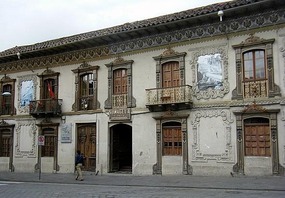
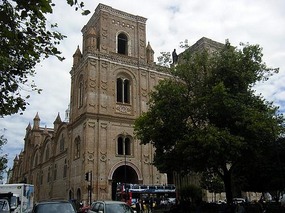

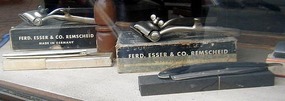
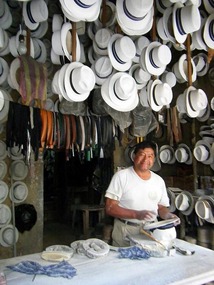
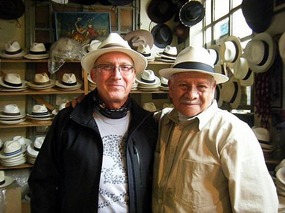
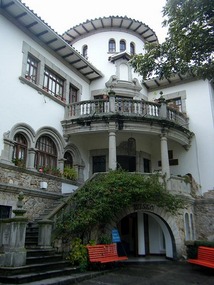
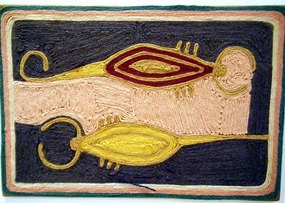
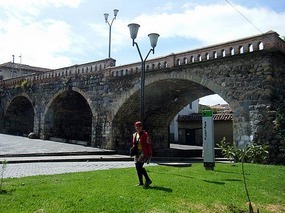
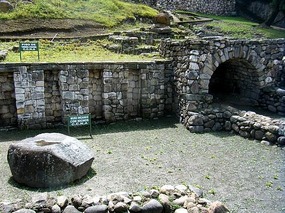
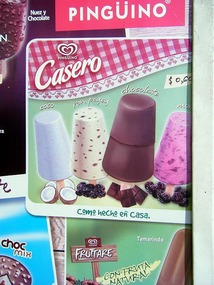




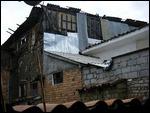
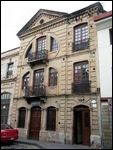

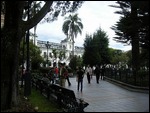
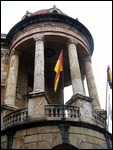
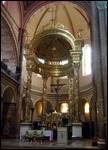
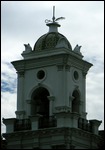
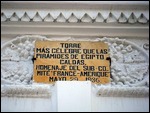

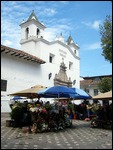
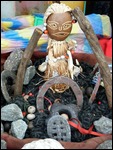
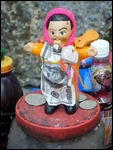

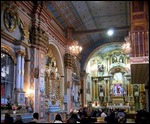
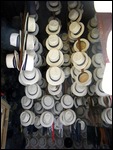
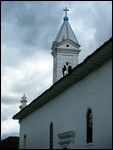
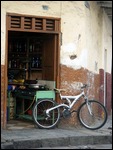
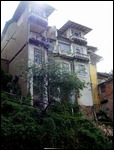
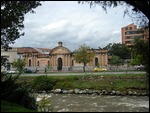
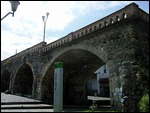

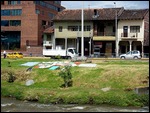
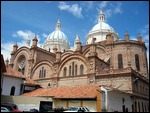
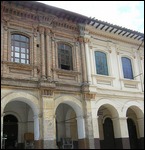
Jenny
2010-07-02
Hi, sad to report that Sr.Alberto Pulla has since passed away.